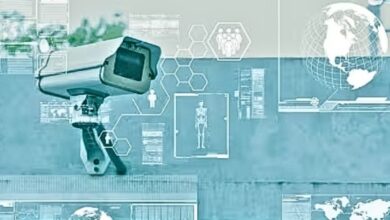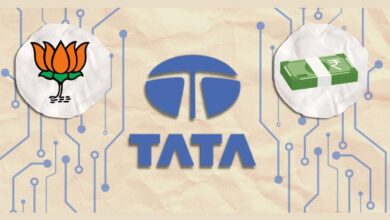India is on the cusp of innovation and is going all guns blazing to digitize the citizen-centric services. One of the greatest challenges testing this collective vision will be to prudently channelise gains, to refine the standard of living of the poorest of poor. We just need to put a series of interconnected devices exchanging information with one another into any digital channel, and the benefits of urban amenities will become accessible to all citizens. This is precisely the purpose which the concept of Internet of Things (IoT) serves. IoT lends intelligence to the citizen-centric services through a precisely designed network of devices and sensors that facilitates intelligent communication between a user and a device or between two devices.
India’s service sector is still evolving and pushing it into the digital realm will enhance its reachability. IoT will hold a major stake in such a transformation by trimming down the reliance on an extravagant physical infrastructure to deliver education, health, and financial services. Indian government’s strides towards paperless governance are beautifully completing this drive of innovation. Digitizing the official processes will expedite the implementation of policies by making a short work of Red Tapism. Things are falling into place with mobile phone networks reaching to every nook and corner of rural lands. There is a need to club this seamless network availability with IoT, and the way people harvest, acquire education and handle their finances will be revolutionized forever.
Rural India can benefit from the trickle down effects of the country’s thriving digital economy through the smart connectivity of devices. IoT can penetrate our cottage Industry, and open gates for the local or traditional products by linking them to our e-commerce industry. IoT holds immense relevance for our rural ecosystem that is gaining strength from flagship schemes like Jan Dhan Yojana which attempts to push the boundaries of financial inclusion by making the basic banking services tangible for the poorest of poor. Opening a bank account is one thing but to make a remotely located individual access that account without any locomotion hassles is something that IoT can achieve with ease. Banks are now paving way for business correspondents who travel to the remotest of areas to let people avail the basic banking services through smart devices such as mobile ATMs or card readers. These devices are seamlessly connected to the back offices of banks. IoT focusses on a smart interpersonal communication to avail urbane amenities over a vast network of connected things, from the comfort of home. This makes it a potential deterrent for the rural to urban migration that is flooding the urban milieu with ill-functioning slums.
With a bulk part of our GDP resting on the shoulders of farmers, no innovation can pass the litmus test without transforming the diaphragm of our Agriculture Industry. IoT is bound to revolutionize our obsolete farming methods by facilitating a network of smart devices to gather real-time information on weather, the pH level of soil, and fluctuating market price of a specific crop. This information can then be sent to mobile phones via cloud technology. Such real-time information will lay the foundation for an optimized farm management, and farmers will prudently handle the vagaries of weather to prevent frequent crop failures. Novel initiatives like Per Drop More Crop will get a major thrust as IoT can augment the irrigation management through smart sensors placed in farmlands. Through Real-time tracking of moisture levels of soil, farmers can regulate the irrigation levels, thus lending a helping hand in our collective fight with Water scarcity.
India has amplified her efforts to voice concerns over Climate Change on global forums and has expedited the implementation of economically viable methods to maintain the sanctity of nature. The ever-expanding carbon footprints are garnering concerns from all over the World. A developing country like ours will have to show utmost prudence to keep mobilizing the bandwagon of innovation along with keeping the carbon emissions under check. IoT has the potential of ushering in an era of impeccable energy management by making way for smarter grids to cut down our transmission and distribution losses. Such losses account for nearly 23 percent of the electricity generated. IoT can enable a network of carbon emitting devices that can be accessed from a remote location so that users can turn off or turn on such devices at will. Such devices can inform users about the technical faults with electric circuits through rea- time alerts, and also throw light on their energy consumption patterns. With Indian Government giving impetus on the advent of Smart Cities, the need for state of the art energy management systems is sure to get a major push.
IoT is playing a crucial role in the resurrection of our ruptured healthcare sector which is dented with overcrowded hospitals. Land for the brick-and-mortar hospitals is shrinking gradually and the diseased from a remote area has been left with no access to specialists. The interconnected smart devices are catapulting the prominence of telemedicine which will eventually make the in-person visits a thing of past. Through a telecommunication infrastructure, a thorough diagnosis can be done by a specialist from a remote location and medication can be prescribed based on the medical data recorded by smart devices. The concept of IoT has stuck a chord with reputed hospitals in metros. Most of them are offering remote consulting services to areas having low penetration of medical facilities, through a smart network of devices. There is no need for patients to keep a track of their medical data as all relevant information is automatically transmitted to doctors for analysis.
With Indian Government being utterly upbeat about the Digital India Programme, IoT is surely going to be an invaluable cog in the wheel of country’s digital Infrastructure. It will take an enormous effort to make the numerous digital channels of this thriving infrastructure accessible to a large populace. Technological and cultural challenges will have to be tackled in order to sensitize people from all walks of life to this incredible drive of innovation. More importantly, such dedicated efforts will lead to an all-inclusive Indian society where quality services pertaining to education, health, and finance will be just a click away.




